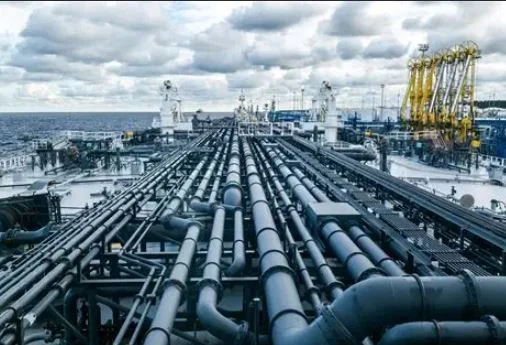The most valuable liquid cargo in the world is transported across the oceans by tankers. These vessels are the unsung heroes of international trade. However, not every tanker is the same. Depending on what they transport and where they operate, they differ in size, design, and functionality.
In this blog, we’ll explore the different classes of tankers by size, and take an in-depth look at the types of tankers used in real-world offshore operations, including some you may never have heard of in a brochure.
Oil Tanker groups by Size (DWT)
Tanker classes are primarily grouped by deadweight tonnage (DWT) — the total weight a vessel can carry, including cargo, bunker, and stores.
- Small Tankers
Capacity Up to 10,000 DWT
Use:Local coastal shipping and bunkering
Seen in Short- ocean trades and harbourage areas
- Medium Range (MR) Tankers
Capacity 10,000 to 60,000 DWT
Use:Transport refined petroleum products
Common in Inter-regional trade (Asia – Middle East, intra-Europe)
- Long Range 1(LR1)
Capacity 60,000 to 80,000 DWT
Use: Product and occasionally crude transport
Routes longer voyages, effective for clean cargo
- Long Range 2(LR2)
Capacity 80,000 to 160,000 DWT
Use: Dual- purpose; handles both clean and dirty oils
Efficient for Long- distance trade with large parcels
- Very Large Crude Carrier (VLCC)
Capacity 160,000 to 320,000 DWT
Primary Use: Crude oil shipping
Operation Major Trade routes (e.g. Middle East to China US)
- Ultra Large Crude Carrier (ULCC)
Capacity above 320,000 DWT
Use:Massive crude oil cargoes
Limitation Restricted to deep- draft ports
Categories of Oil Tankers by Cargo
- Tankers carrying crude oil
They are specifically made to transport unprocessed, raw oil from shore facilities or offshore production areas to refineries worldwide. They have a simple, wide design and large tanks for one type of liquid cargo. Since they do not need to carry different cargoes, their interior layout is straightforward. This improves loading and unloading efficiency for bulk crude shipments.
- Product Tankers
These tankers are designed to carry various refined petroleum products, such as aviation fuel, gasoline, and diesel. They can transport several cargo grades at the same time without contamination because they have multiple independent tanks.
- Parcel Tankers
These vessels are designed to transport specialized liquid cargo in smaller amounts, including various types of oils or chemical products. Each tank typically has its own pipeline and pump system to avoid cross-contamination.
- Combination Carriers, OBO and OOC
OBO stands for Oil-Bulk-Ore carriers. These versatile ships can carry liquid goods such as oil and bulk solid materials like coal and iron ore. While they offer flexibility, they require more maintenance and are currently doing well in service.
- Shuttle Tankers
These tankers are constructed to load crude oil directly from offshore facilities, such as FPSOs, and carry it to coastal terminals. They usually have dynamic positioning systems to provide secure operations close to the coast.
- Bunkering Tankers
Small vessels that deliver specific MGO, or HFO, or LNG to ships at anchor or in harbour. Bunkering tankers are a necessary function in the logistics of the port.
- Tankers of the Ice Class
Designed with ice navigation systems and reinforced hulls for transit in the arctic or Antarctic. These have been approved to function in arctic environments.
8. Oil tankers powered by LNG
In order to fulfil pollution norms, these new oil tankers operate on liquefied natural gas (LNG). They are contributing to the green revolution in merchant shipping.
Conclusion
From tiny bunker barges to VLCC monsters, all classes of oil tankers play a particular function in world trade. It is important that anyone employed at sea appreciates their size, shape, and compatibility with cargo.
As global demand shifts and emission rules tighten, dual- fuel and hybrid tankers are also getting more common — signalling how this industry is evolving.
Whether you are on board or ashore, knowing your tanker types helps you stay prepared, efficient, and safe.


